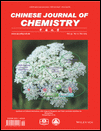Temperature-Induced Transformation from Large Compound Vesicles to Worm-like Aggregates by ABC Triblock Copolymer
Abstract
Two triblock polymers, tetraaniline-block-poly(N-isopropyl acrylamide)-block-poly(hydroxyethyl acrylate) (TA-b-PNIPAM-b-PHEA) and TA-b-PHEA-b-PNIPAM, were synthesized with unambiguous structure by a two step method. The difference of these two diblock polymers is the connection order of carboxyl group to block, e.g., carboxyl group to PNIPAM block for PNIPAM-b-PHEA and to PHEA block for PHEA-b-PNIPAM. Secondly, block tetraaniline was linked to the diblock polymer through amidation to yield the corresponding triblock copolymer. Both of them have almost the identical chemical compositions. The only difference is the connection order of each block in the triblock polymers. When they were self-assembled at 45°C in a suitable solution, both of their aggregates have spherical shape with slight defects on their surface with the average diameter of about 400 nm. However, when their aggregate dispersion was cooled down to 20°C, only TA-b-PHEA-b-PNIPAM's morphology changed, forming worm-like aggregates with the diameter of about 100–200 nm transformed from spherical aggregates. Both amphiphilic property and position of each block in this triblock copolymer are very essential for this morphology transformation. Since the worm-like aggregates presented here by our group have hollow structure inside, its controlled release properties for doxorubicin were evaluated. Drug release experiment indicated that along with the temperature changes, the rearrangement of the intermediate layer structure caused morphology change in aggregate, thus accelerating the speed of drug release.




